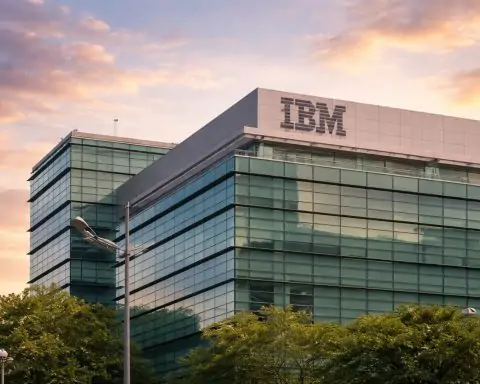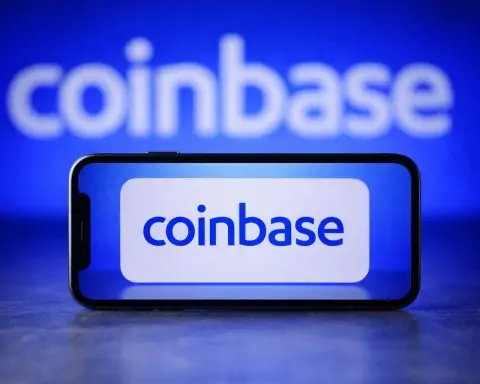Published: November 12, 2025
JPMorgan Chase has begun rolling out a new deposit token—JPM Coin (also referred to as JPMD)—to institutional clients, marking one of the most consequential moves yet by a global bank to bring real‑world money onto public blockchains. The token initially operates on Base, Coinbase’s public Ethereum layer‑2 network, and is designed to enable near‑instant, always‑on settlement for corporate payments and treasury flows. [1]
What JPM Coin (JPMD) is—and isn’t
Unlike a stablecoin issued by a fintech, a deposit token represents a direct claim on money already held in a customer’s bank account. In practice, that means on‑chain transfers are simply movements of tokenized balances backed 1:1 by commercial bank deposits. For institutions, the promise is speed (seconds), availability (24/7/365) and integration with programmable finance, while staying inside a bank‑grade compliance perimeter. Industry coverage today underscores that deposit tokens are distinct from stablecoins and can be structured to bear interest, making them more familiar to corporate treasurers than typical crypto instruments. [2]
Why the launch matters today
Deploying JPM Coin on Base pushes bank‑issued tokenized money beyond private bank networks and into a public‑chain environment, broadening where and how institutions can settle value and interact with tokenized assets. Reporting today indicates JPMorgan plans to extend the token beyond Base and into additional blockchains and currencies, subject to regulatory approvals—an important signal for corporates that multi‑chain, multi‑currency support is on the roadmap. [3]
Parallel development: DBS and JPMorgan’s Kinexys target cross‑bank interoperability
In a separate but closely related development this week, DBS and Kinexys by J.P. Morgan (the bank’s digital‑money and tokenization arm) unveiled work on a framework for interbank tokenized deposit transfers across public and permissioned blockchains. The goal is to uphold the “singleness of money” across issuers and networks so that a tokenized deposit from one bank is fungible with another—and can move seamlessly across borders at any time. [4]
DBS explains how this could play out in real life: a J.P. Morgan institutional client could pay a DBS institutional client using JPMorgan Deposit Tokens on Base, and the recipient could exchange or redeem those funds via DBS Token Services—all on‑chain and in real time. The banks frame this as a step toward an interoperable, cross‑issuer standard that links their ecosystems and reduces fragmentation for institutional users. [5]
The near‑term use cases for corporates
- Cross‑border payments and treasury sweeps: Always‑on settlement can compress cut‑offs and reduce trapped liquidity across regions. Early reports today emphasize seconds‑level settlement on Base. [6]
- On‑chain marketplaces and tokenized assets: With money native to blockchains, institutions can settle tokenized securities, receivables, or fund shares without leaving the chain—cutting reconciliation steps. (DBS and Kinexys explicitly cite scaling tokenized‑deposit usability across both public and permissioned environments.) [7]
- Compliance‑aligned digital cash: Because JPM Coin/JPMD represents bank deposits, it fits existing KYC/AML controls and corporate accounting treatments better than many crypto‑native instruments, according to today’s coverage. [8]
Key differences from stablecoins and CBDCs
- Backing & claim: Deposit tokens are claims on commercial bank money; stablecoins are typically claims on a reserve portfolio; CBDCs (where available) are claims on a central bank. [9]
- Interest treatment: Deposit tokens can be interest‑bearing under bank arrangements, a meaningful consideration for treasurers managing cash yields. [10]
- Network scope: With JPM Coin launching on Base and the DBS/Kinexys work spanning public and permissioned chains, today’s announcements focus squarely on interoperability rather than a single, walled‑garden ledger. [11]
What to watch next
- Expansion beyond Base: JPMorgan’s stated intent to support other chains and currencies—pending approvals—will determine how quickly corporates can embed the token across geographies and workflows. [12]
- Cross‑issuer pilots: DBS and Kinexys aim to demonstrate that JPMD and DBS tokenized deposits remain fungible across issuers and networks without breaking the singleness of money. Early use cases and throughput metrics will be closely watched. [13]
- Collateral and market plumbing: As bank‑grade tokens plug into trading venues, prime brokers, and custodians, expect experiments around on‑chain collateral mobility and intraday liquidity. (Today’s reporting highlights growing market integrations as part of the rollout momentum.) [14]
The bottom line
November 12, 2025 will be remembered as the day bank‑issued digital cash decisively stepped onto a public blockchain at global scale—and as the week two of the world’s most sophisticated banks set out to make tokenized deposits interoperable. For corporate finance leaders, the practical value is straightforward: faster settlement, longer operating hours, and infrastructure that’s finally converging on bank‑grade, programmable money. The strategic value is bigger still—plug‑and‑play cash for the on‑chain economy, built to interact with tokenized assets and services wherever they live. [15]
Sources (today and this week):
- CoinDesk: “JPMorgan Rolls Out JPM Coin Leveraging Coinbase’s Base: Report” (Nov. 12, 2025). [16]
- Seeking Alpha: “JPMorgan launches deposit token on Coinbase‑affiliated public blockchain” (Nov. 12, 2025). [17]
- DBS newsroom: “DBS and Kinexys by J.P. Morgan to develop framework for interbank tokenised deposit transfers across multiple blockchains” (Nov. 11, 2025). [18]
Editor’s note: Bloomberg first reported the JPMorgan rollout; secondary sources above reflect and expand on those details published today. [19]
References
1. www.coindesk.com, 2. www.coindesk.com, 3. www.coindesk.com, 4. www.dbs.com, 5. www.dbs.com, 6. www.coindesk.com, 7. www.dbs.com, 8. www.coindesk.com, 9. www.coindesk.com, 10. www.coindesk.com, 11. www.coindesk.com, 12. www.coindesk.com, 13. www.dbs.com, 14. www.coindesk.com, 15. www.coindesk.com, 16. www.coindesk.com, 17. seekingalpha.com, 18. www.dbs.com, 19. seekingalpha.com










